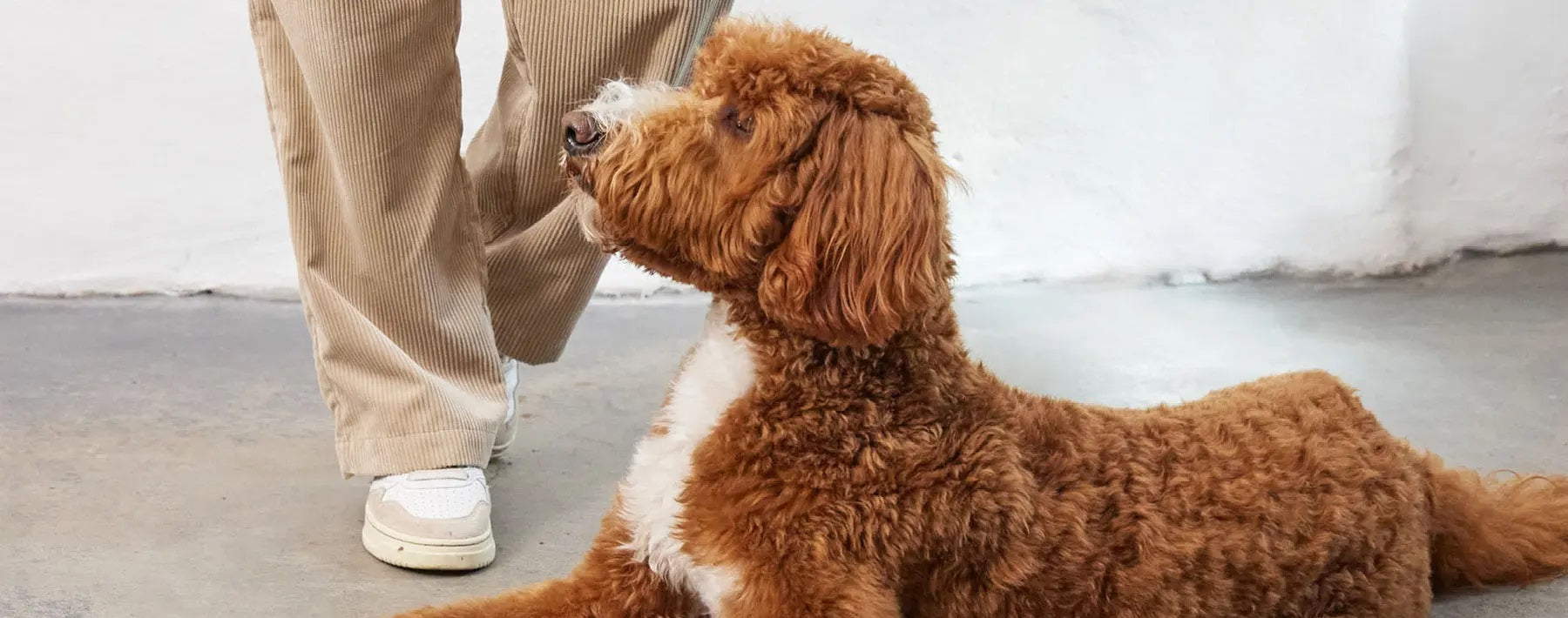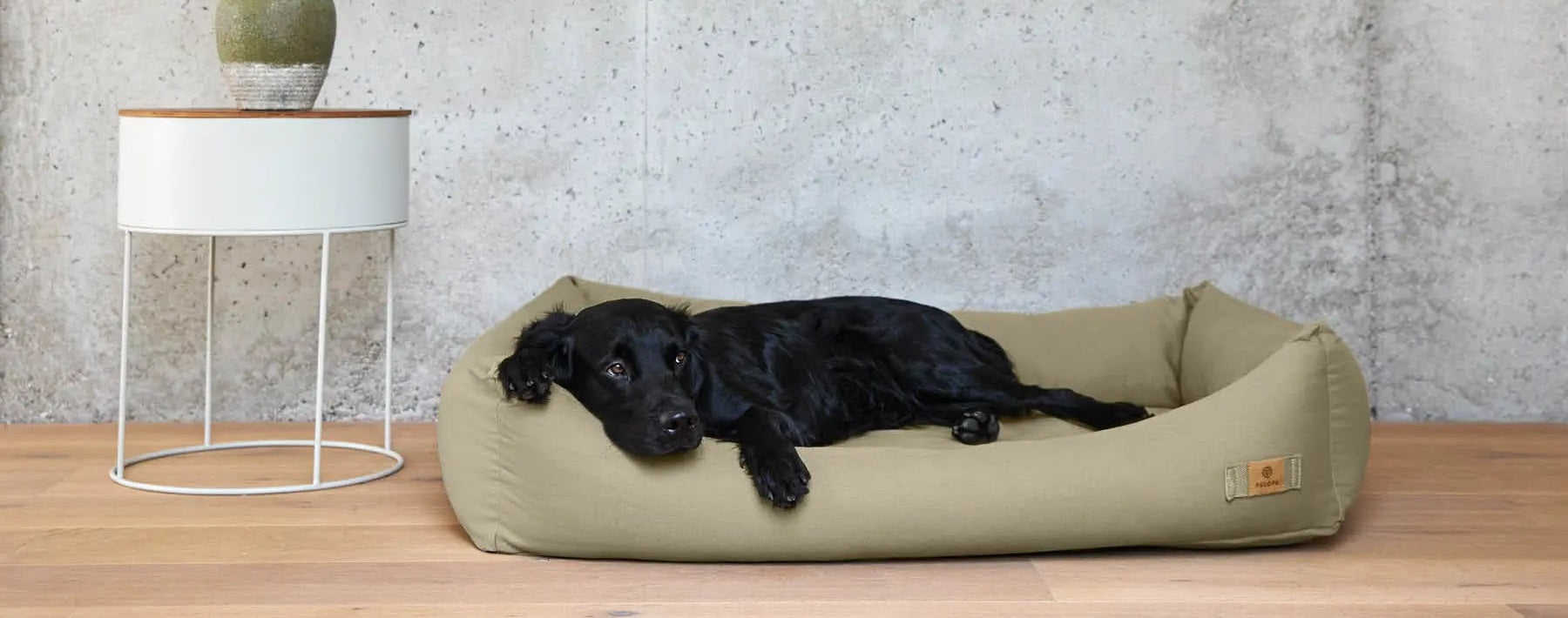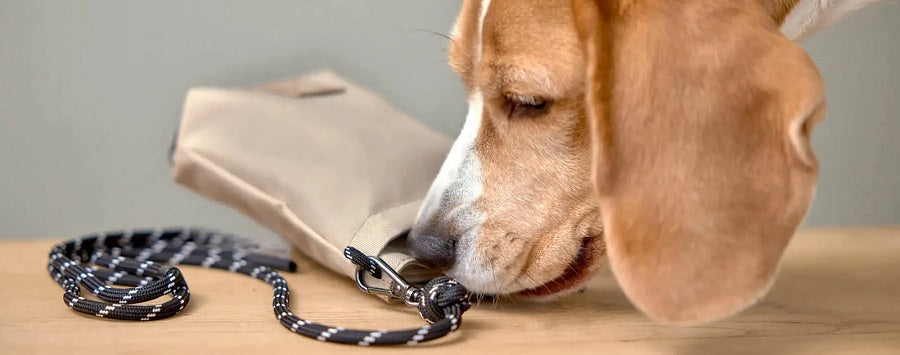
Basic commands in dog training
In everyday dog life, it is extremely important that you work well together as a team. Certain commands that your dog should know and that you can easily teach him can help here. And the best thing: training together is a lot of fun and strengthens the bond between dog and owner.
It's not a big challenge for your dog to associate words with things or commands. In fact, it is able to save and convert up to 250 words individually. Added to this is his ability to interpret your facial expressions, gestures and behavior. Pretty clever, isn't it?
Dogs love to learn: How to teach your dog commands
In principle it's very easy! All you have to do is make a connection between a signal and the expected action. This requires patience and consistency, because some dogs understand what you are asking of them very quickly, while others take a little longer. It's better to practice several times a day for a few minutes instead of planning long study sessions. It is also particularly helpful if you choose a distraction-free environment for training in which your dog feels comfortable. A nice treat as an incentive is also very useful when training your dog. You always have them to hand in the matchingtreat bag .
What kind of dog commands are there and which are the most important? Below we will introduce you to a few basic dog commands and describe how you can teach your dog the respective signal.

Command “Sit”: Teach your dog to sit down
The command “Sit!” will help you calm down your dog in many moments. For example, if you want to keep him on a leash for a short time or let someone pass by when you go for a walk.
To teach your dog the "sit" command, you can hold a treat over his head. He usually sits down on his own to continue watching the treat. At that moment you say “sit” and immediately give him the reward. You repeat the whole procedure a few times.
You can stop jumping up or anything like that with “No”. Give your dog the treat while he is actually sitting and gradually increase the interval between sitting down and receiving the treat.

Make “space”: This is how you teach your dog to lie down
“Space” is particularly useful in situations where you want your four-legged friend to stay calm and relax. This could be, for example, visiting friends or going to a restaurant.
When the dog commands “down,” your dog should lie down immediately and stay lying down until you give him permission to get up. Dogs usually sit down before lying down. That's why it's particularly pleasant for your four-legged friend if you start in the "sitting" position.
Hold the treat in your closed hand and move it across the floor in front of your sitting dog. Say the command “down”. If your dog follows with his nose and lies down, praise him extensively. Repeat the whole procedure a few times.
Important note: If your dog is lying on the floor and stretching out its front legs, it is often the wrong “place”. With the correct version of “down,” your dog is completely relaxed and lies more on his side. In contrast, with the first variant he is usually in a state of expectation and is immediately ready to get up.
This “place” is often more suitable for dog sports as it allows your four-legged friend to change position quickly. In a café or with friends, however, your dog should of course be relaxed, i.e. make the right “space”.

"Stay!" - A useful command in everyday life with your dog
The command “Stay!”, which at first glance seems so unspectacular, is extremely helpful when living with a dog. For example, when visitors come and your dog has to stay in its place or when you're out for a walk when a jogger or cyclist has to be let past.
It means something like “Stay where you are until I come back and cancel the stay command”. You can ask your dog to “Stay” while standing, sitting or lying down. But initially it is easiest to get the dog used to this command while lying down.
You have to combine the outstretched hand towards the dog with the exclamation “Stay”. The dog is signaled to stay in that spot until it receives a signal that it can leave. If he has done this successfully, he gets a treat.
Always go back to your dog and resolve the stay command. Your dog should wait for you to return relaxed and with as few expectations as possible. If he does want to move and leave his place, bring him back to the starting point without comment and repeat the exercise.
Helpful tip: First work on the duration of the command, then the distance, and finally the difficulty level.
Recall Training: How to Teach Your Dog to Return
Reliable recall is one of the most important signals in dog training to avoid dangerous situations. It offers your dog protection from other dogs, people and the environment.
The aim of the recall is to ensure that your four-legged friend can resist all environmental stimuli as best as possible and runs to you without detour. This means that you are so interesting to your dog that he doesn't have much trouble immediately tearing himself away from the distraction.
It is advisable to shout something funny, exciting or flattering. This attracts attention and prevents the tension that builds up with threatening calls. If you appear relaxed, your dog will be much more likely to come back to you.
Establish a single real recall signal that you only use when you really want your dog to come to you and stay until you send him away again.
For example, initially you practice on a meadow without any distractions. Attract your dog to you with your voice and inviting posture. If he is on his way to you and you know he is coming soon, give the callback signal. Now reach into the bag to get the reward.
Important tip: In everyday dog life it is important that you react quickly!
If your four-legged friend suddenly tenses his body, pricks up his ears and puts his nose against the wind or on the ground, you have a maximum of two seconds to stop him with a recall.
Once he starts running, his hearing switches to draft. In this case, it's best to stay silent for a moment and then call him back - not in a fearful or angry way, but in the way you've practiced. This way your dog will come back to you reliably.
No/Off/Ugh: Set boundaries and stop unwanted behavior
The command “No” signals to your dog that he should stop an action immediately or that his behavior is not okay or undesirable. This teaches him to behave well. Dogs don't necessarily know what's good or bad for them, what they can and can't do. That's why you should set limits for your dog by using the command "No."
For example, if he stole your shoe and is now gnawing on it, you first say a firm “no”. Since your dog probably won't let go of the shoe immediately, there is now a consequence for not following the command: you tap your dog at shoulder height. This physical contact signals to your dog that he should stop his behavior. He usually lets go of the shoe and looks at you expectantly. Now you can take the shoe away.
After every “no” that your dog doesn’t follow, there is this physical consequence. If you repeat this process often enough, your dog will eventually understand that if he says “no,” he should stop his current behavior. If your dog follows the command, he will of course be praised for it.

At Heel: Command for controlled walking at your side
There will always be situations in which your loved one should definitely be next to you. No matter whether in the pedestrian zone in the city center, on a narrow sidewalk on the street or on a dirt path where another person with a dog is coming towards you.
Leading your dog in a controlled manner gives you security and at the same time strengthens the relationship between you and your dog. Of course, good footwork requires a lot of intensive training, but it's always worth it.
Hold a treat in your hand on the side you want your dog to walk on. Now get your dog's attention by speaking to him and showing him the treat. If your dog is sitting or standing on your desired side, give him your “Heel” signal and take 2 to 3 steps forward. Your dog will follow you because he is focused on the treat in your hand. This means it automatically maintains the correct distance. Stop again and give your dog the treat if he has done it correctly. Give him additional verbal praise. Then repeat the exercise and gradually increase the requirements.
Attentive eye contact in particular should be so solid that your dog does not allow himself to be distracted by anything and consistently remains in the basic position and looks at you expectantly.
After each training session, you should release your dog from the exercise so that he knows when he can move freely again and stop eye contact.

It's best to start teaching your dog the commands right away, let's get started! We wish you good luck with your training!
Want even more dog knowledge? Become part of the PALOPA community! Together with the experts from the HUNDIVERSUM ®, we regularly provide you with tips and information and look forward to a regular exchange.
Did you like the blog post? Then always stay up to date with our newsletter and be automatically notified about new blog posts. You can also get great discounts and freebies. Here go to registration.



Leave a comment
This site is protected by hCaptcha and the hCaptcha Privacy Policy and Terms of Service apply.